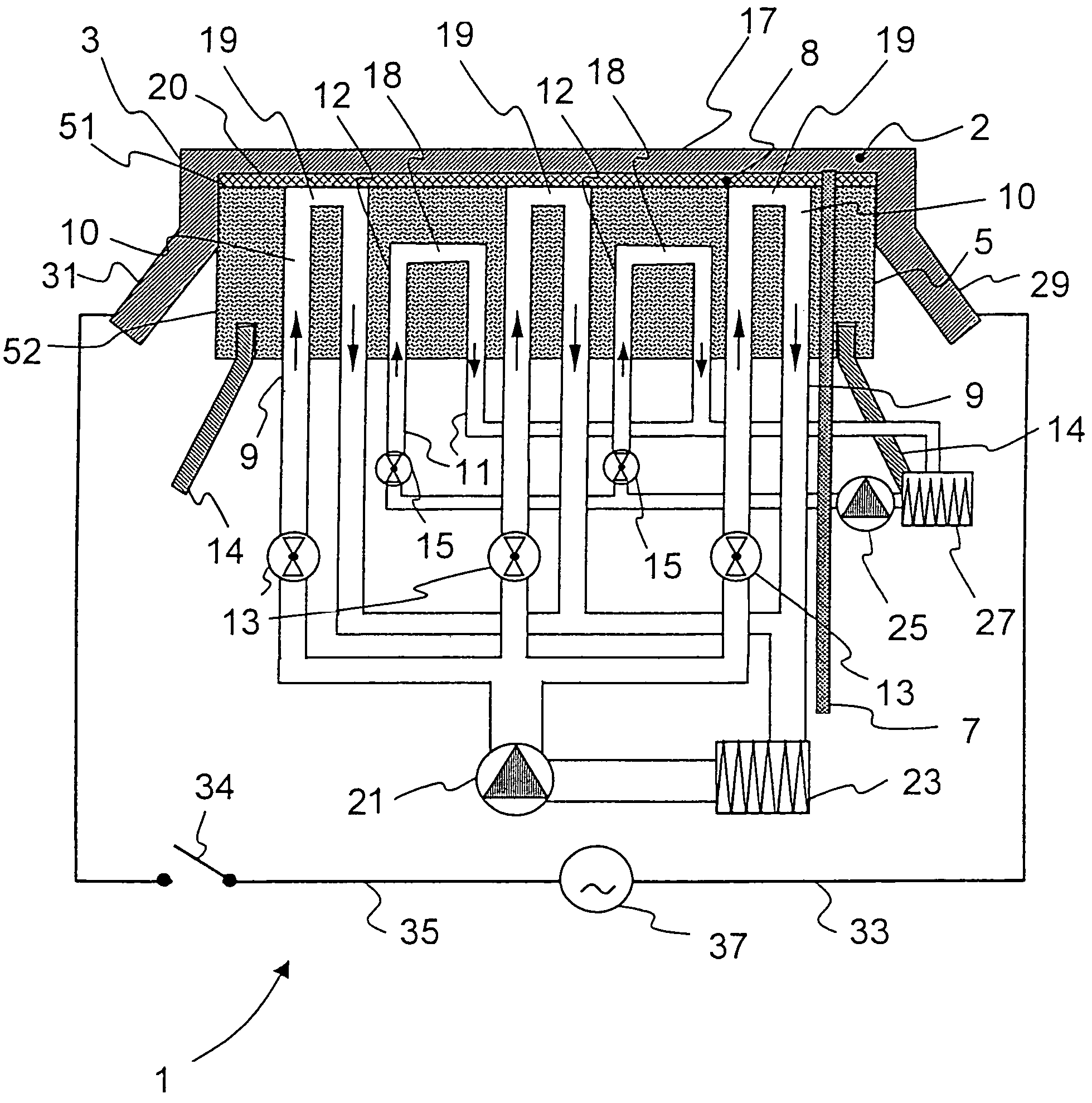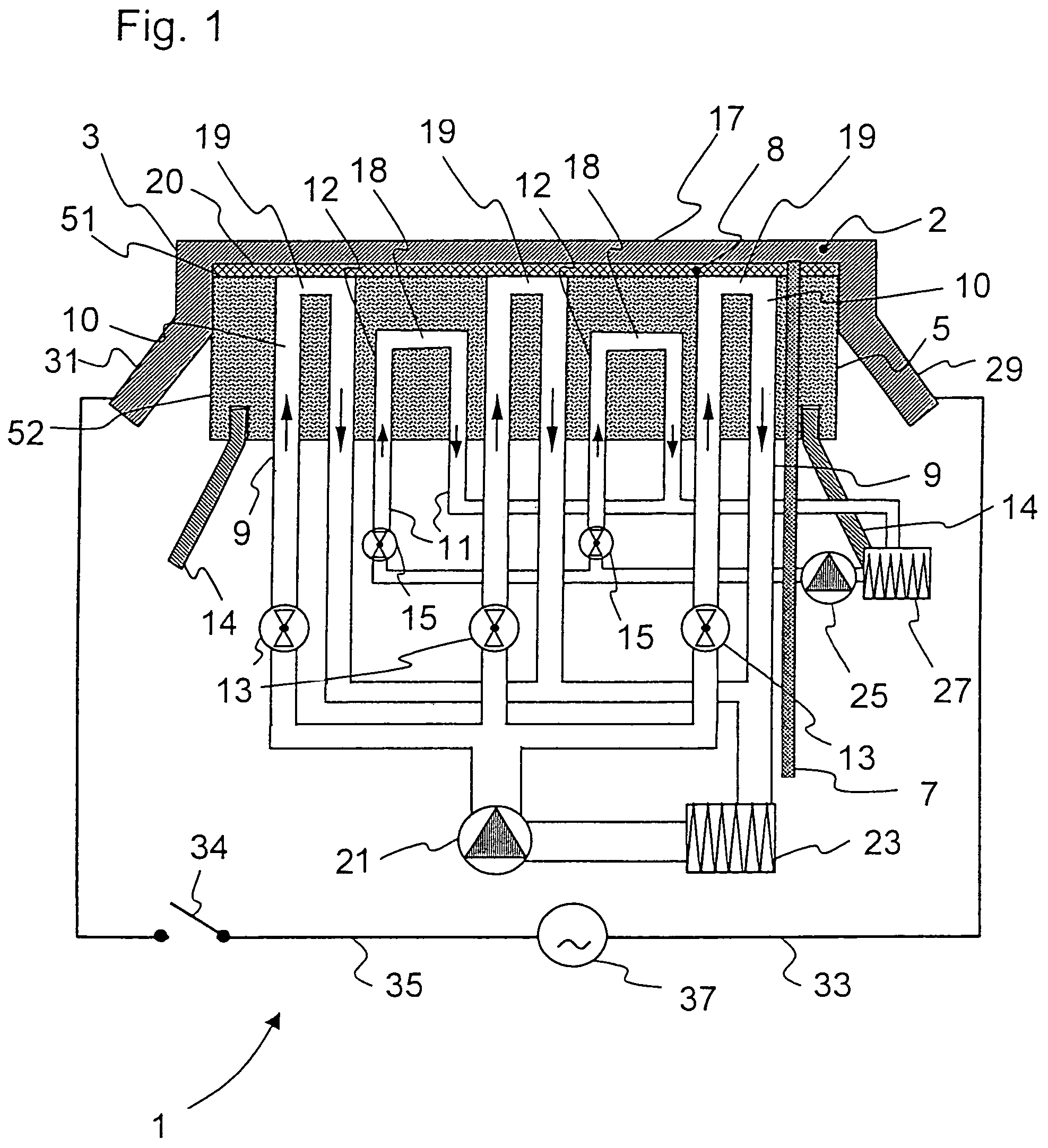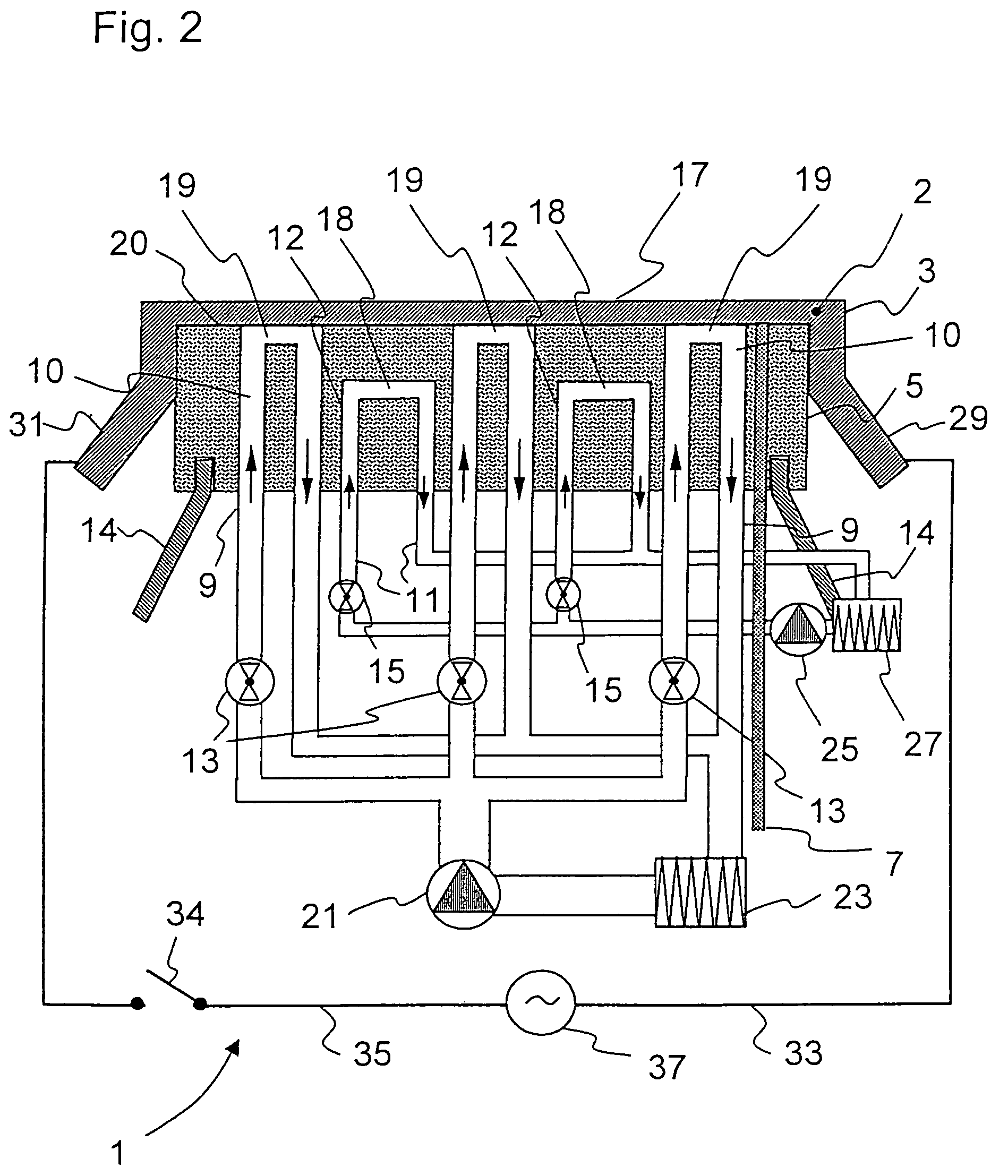Heating apparatus with electrode for the conductive heating of melts
a technology of conductive resistance and heating apparatus, which is applied in the direction of ohmic resistance electrodes, glass blowing apparatus, glass shaping apparatus, etc., can solve the problems of high energy loss, no known contact material which can be used in practice, and the inability to select any desired high temperature in the melt, etc., to achieve the effect of improving cooling
- Summary
- Abstract
- Description
- Claims
- Application Information
AI Technical Summary
Benefits of technology
Problems solved by technology
Method used
Image
Examples
first embodiment
[0068]FIG. 1 shows the invention, in which the electrode 3 includes a melt contact material 2 comprising a metallic material, for example a refractory metal, such as tungsten, molybdenum and / or platinum, rhodium, iridium, as well as alloys thereof. The melt contact material 2 has been applied to a refractory material 8 or an electrically conductive ceramic, such as for example an SnO2 ceramic. The supporting apparatus 5 has a multiplicity of connections 9 which are connected to fluid-conducting passages 10 in the interior of the supporting apparatus, with the connections 9, as well as the fluid-conducting passages 10 connected to them, forming parts of a first cooling system.
[0069]Moreover, the supporting apparatus 5 has a multiplicity of further connections 11, which are likewise connected to fluid-conducting passages 12 in the interior of the supporting apparatus. These connections 11 and the fluid-conducting passages 12 connected to them form part of a further cooling system.
[007...
second embodiment
[0083]FIG. 2 shows the invention, in which the supporting apparatus 5 is not constructed in sandwich form. In this embodiment, a section 19 of the fluid-conducting passages 10 of the first cooling system likewise extends along the side 20 of the supporting apparatus 5 against which the electrode 3 bears. In this embodiment, the sections 19 are open directly toward the electrode 3. This produces direct contact between the coolant and the electrode 3, thereby achieving particularly successful and quickly controllable cooling. A heat transfer barrier, as is formed between two layers in a sandwich structure of the supporting apparatus, is also avoided.
[0084]However, in this case the melt contact material 2 of the electrode 3 must be sufficiently strong, even at the high temperatures of use, to prevent deformation or even cracking-open of the melt contact material 2, which is unsupported in the region of the sections 19, as a result of the hydrostatic pressure of the melt. By way of exam...
PUM
| Property | Measurement | Unit |
|---|---|---|
| pressure | aaaaa | aaaaa |
| temperatures | aaaaa | aaaaa |
| temperature | aaaaa | aaaaa |
Abstract
Description
Claims
Application Information
 Login to View More
Login to View More - R&D
- Intellectual Property
- Life Sciences
- Materials
- Tech Scout
- Unparalleled Data Quality
- Higher Quality Content
- 60% Fewer Hallucinations
Browse by: Latest US Patents, China's latest patents, Technical Efficacy Thesaurus, Application Domain, Technology Topic, Popular Technical Reports.
© 2025 PatSnap. All rights reserved.Legal|Privacy policy|Modern Slavery Act Transparency Statement|Sitemap|About US| Contact US: help@patsnap.com



